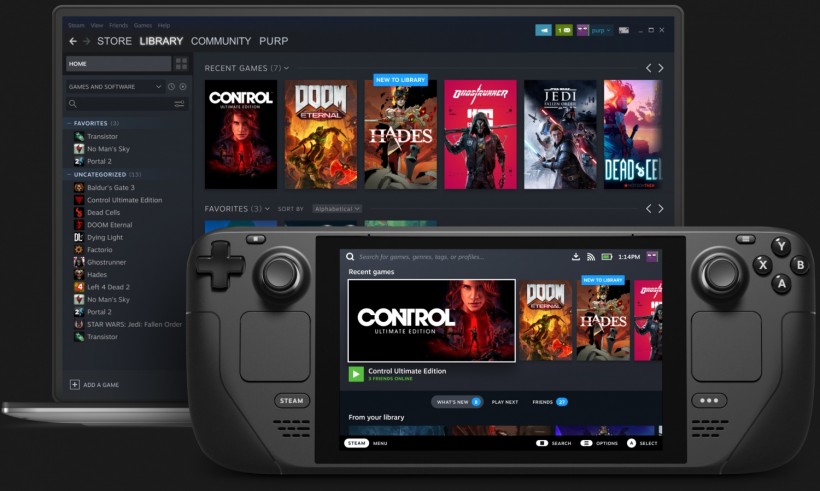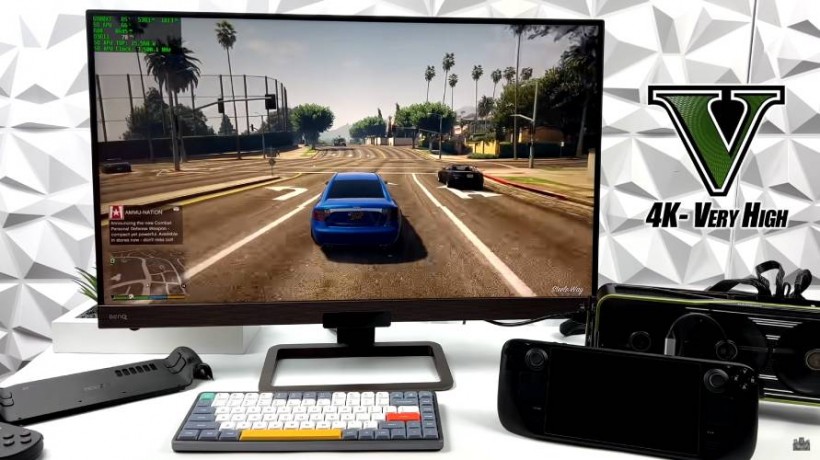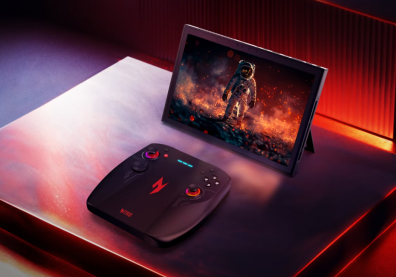The Steam Deck is perhaps already the most powerful handheld gaming console ever made so far. But what if it had even MORE power?

That was the question that YouTuber ETA PRIME asked themselves before going on this "experiment." Either way, they did it: they attached their Steam Deck to an external graphics card and documented the entire process:
The entire thing basically robs the handheld gaming console of any hint of portability. After all, you're going to need to power that card with either a full-size PSU or a super-expensive GPU dock. Either way, the thing worked even if Valve didn't really put an "official" option for it.
According to GameSpot, ETA PRIME managed to pull it off by opening up the Steam Deck, taking out the M.2 SSD and then using an adapter to connect to the GPU-a top-end AMD RX 6900 XT-via the Deck's M.2 port. The adapter he used was a dock from ADT-Link, which sells for around $87 on Amazon right now.
Then, to power the 6900 XT he used a Corsair CX750M 750-watt power supply, which he then connected to the M.2 dock's 24-pin power connector. He then connected the desktop-size power supply to the AMD card's three 8-pin power connectors.
To complete the entire project, he booted up the device from a Windows 11 install on a microSD card, since he had to take out the internal M.2 SSD to make way for the external GPU.
MASSIVE Performance Boost, But Still Limited
If you're wondering whether the experiment boosted the Steam Deck's gaming performance, the short answer is yes. It did.
In the video, ETA PRIME showcased a few games by hooking up the Steam Deck to a desktop 4K monitor. Among the games he tested was The Witcher 3, which tallied a 108 FPS average on Ultra settings at 4K.
Read also: How To Install Windows On The Steam Deck-And Why You Might NOT WANT TO
Another game he showcased was GTA V running once again on maximum graphics settings at 4K. But that's where this experiment showed its achilles' heel: the game only had an average of 73 FPS because the RX 6900 XT is being bottlenecked by the Valve handheld's relatively underpowered CPU.

steam deck external gpu
To cap things off, he also benchmarked Elden Ring, God of War, and Cyberpunk 2077 on the souped-up Steam Deck and came up once again bottlenecked by the handheld's 4-core, 8-thread AMD Zen 2 CPU. Despite that, Tom's Hardware considered ETA PRIME's experiment a success. But at the same time, it was also an exercise in futility as this method completely robs the handheld gaming device of any portability-or even sense, for that matter.
We're saying "sense," because there's still a lack of an official external GPU solution that will work with the Steam Deck in a plug-and-play manner. Most external GPU docks use a Thunderbolt port to connect to laptops, but Valve didn't put a Thunderbolt connection into their handheld. If you want to do something like this, buy a desktop or a laptop.
Related: Steam Deck 2 Is Already In The Works, Says Gabe Newell
Story posted on GameNGuide
Written by RJ Pierce









